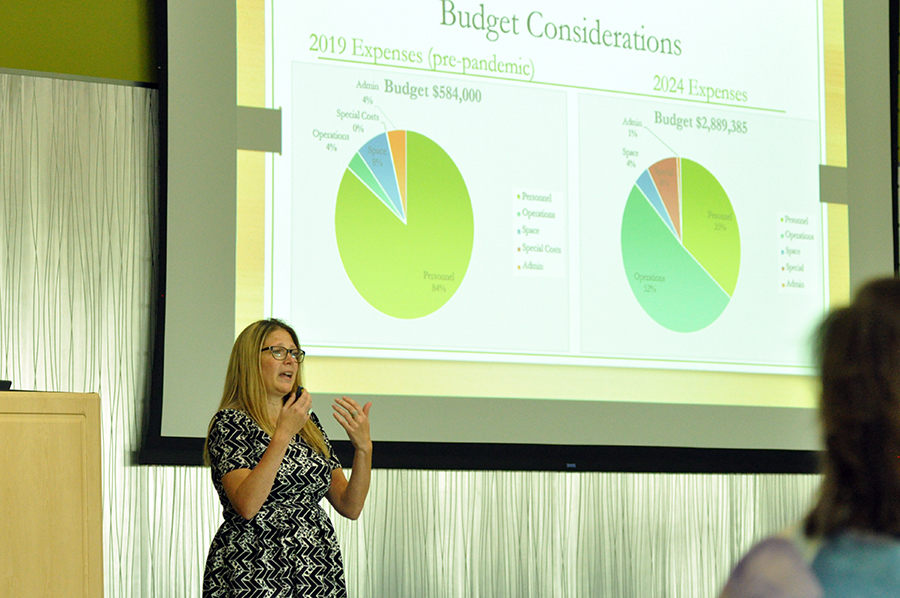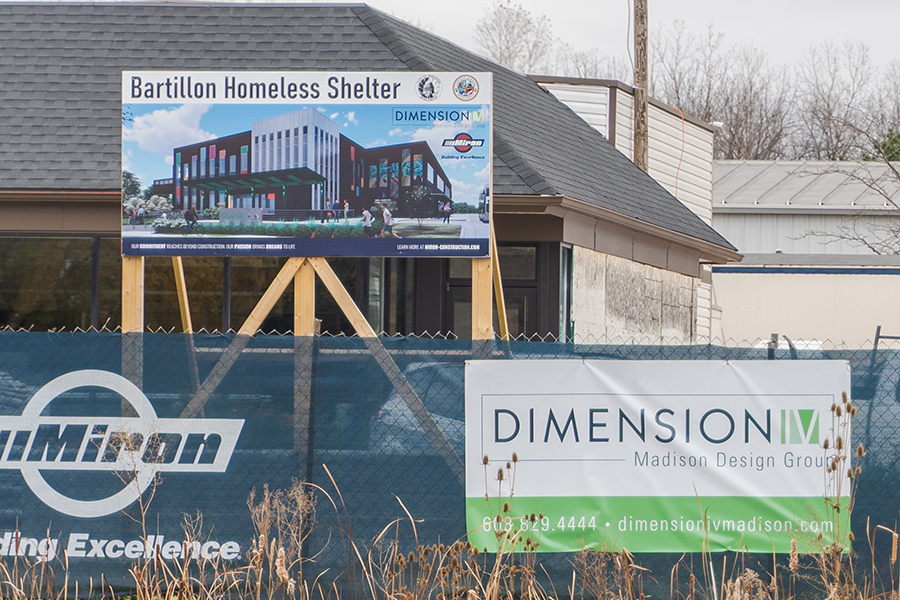Madison College hosted a presentation by the City of Madison and Porchlight, Inc., Dane County’s largest provider of low-cost housing and homeless services, during two information/listening sessions on campus last week to discuss the Permanent Shelter Development Update at 1904 Bartillon Drive.
The sessions discussed the location, design and safety impacts of the Porchlight Shelter on 1904 Bartillon Drive.
Moderated by Sylvia Ramirez, Executive Vice President of Finance and Administration, Chief Operating Officer, the overview was presented by City of Madison Community Development Grants Supervisor Linette Rhodes and Karla Thennes, the executive director of Porchlight, Inc.
Pre-pandemic, Porchlight operated shelters that used the basements of three downtown churches.
Then, in 2020, public health concerns forced their closure and led the city to set up temporary shelters in three church basements. At this time, officials saw a need for a permanent alternative, leading to the 1904 Bartillon Drive proposal.

Since April 2022, some of the Common Council Actions to date include authorizing the use of the 1904 Bartillon Drive site for a permanent shelter and approving the selection of Porchlight Inc. as the purpose-built shelter operator.
After selecting Porchlight Inc., the project team began seeking community feedback on design and services (called Trauma-Informed Design Assessment), where the city and Porchlight engaged with people with lived experiences, including those who’ve experienced homelessness, current guests of shelters and those who have chosen not to access shelter.
Through surveys, emails and door-to-door feedback requests, the city engaged with not only those with lived experience but also neighborhoods and businesses near Bartillon Drive, including gas stations, child and adult care centers, car dealerships and bars.
The assessment interviewed 145 people, 77 service providers and 68 people accessing services.
The Trauma-Informed Design report addressed three themes — safety, services and design.
The top three responses for safety features were found by conducting neighborhood engagement: accessing contact information for shelter and outreach staff and increasing lighting and surveillance.
Service providers weighed in with the top responses concerning the highest-demand onsite services, including housing, behavioral health and case management.
Regarding design, the top three responses from people with lived experiences included transportation services, help finding housing, and having someone available to discuss mental and basic health care issues.
For further information, contact City of Madison Community Development Grants Supervisor Linette Rhodes at [email protected].



























